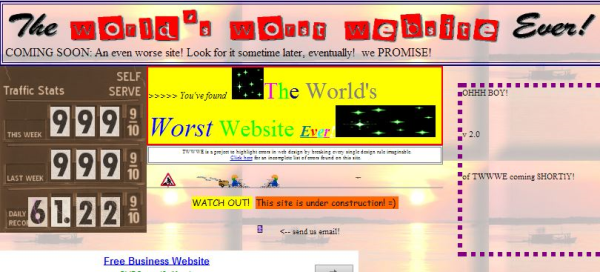I am writing this blog on my 20th anniversary “get-away” weekend from beautiful Lake Tahoe, California so it will be short and sweet! The topic today is “what makes a good website?” As with most marketing questions, there are a lot of ways to answer this question. A couple of weeks ago, we blogged about the importance of being able to be found by local searches, and how you can get better at that. If you didn’t read that, check it out here. Clearly if we are asking what makes a good website, having it found is a good first step!

Let’s assume today that your website has been found by someone looking for your services. What is it that makes someone “stick” to your website? You might be familiar with the term “bounce rate” but if you aren’t it refers to how quickly someone bounces off your site once they have arrived. If your site does not immediately present a solution to the question they are asking, or if it is not obvious to them, they will “bounce” right off. Statistics tell us that 95% of all people who visit a website never return, so you have to figure out how to capture traffic once it finds you. When you are looking at your website analytics, your bounce rate can help you determine if your site is presenting helpful information or not.
So, how do you help make your website “sticky” once someone arrives? Four simple thoughts for you:
1. Clean, Not Cluttered
If I am overwhelmed by the amount of stuff on your site when I arrive, I won’t stay. While the tools of the trade give us opportunities to do some fancy stuff, too many moving parts can overwhelm the brain and shut down the search. To determine if you have the makings of a good website, try what is called the “5 second test.” If I show you a page for 5 seconds and take it away, can you tell me what it was about? With the speed of people moving through the internet, 5 seconds is sometimes all you get. In web design, the 5 second test will tell you what stands out on your site. If the feedback isn’t what you want people to see first, then it’s time to change things up! First impressions matter online just like they do face to face.

2. Easy to Navigate
Help your customers know what to do once they are in your site. A good website guides them through a process and gives them options to help understand your services. Label your navigation with terms that are consistent with other websites. While it is tempting to get creative with navigation, if you confuse your potential customers that will not serve you well.
3. Benefits before features
Experts always answer questions nobody is asking. We call this the disease of the expert, and as the expert it sounds something like this in your mind. “I have to give them more information and explain everything really clearly.” It sounds good, full of logic and integrity, but the problem is that you know far more about your product or industry than the average customer will ever care about. Your website’s job isn’t to tell everything you know, it is to create enough interest for a customer to take the next step. The customer wants to know what is in it for them. What is the benefit of using your product or service? You are tempted to give them “features” which is all of the data behind the product. Simple example:
Feature: We offer rack and pinion steering
Benefit: The car steers easily for safer driving
With the feature, you make the mistake of assuming your audience understands the power of rack and pinion steering. While a small handful might, your job is to make sure that the overwhelming majority understand, so you have to explain why the feature matters. The clearer you are, the better you will position yourself for new customers.
You have to remember that as the expert, you are inside your company, looking out. The public is outside, looking in which means they have a very different perspective. It is absolutely true that simple statements work best for others and help make a good website, but simple statements sometimes feel incomplete, not entirely honest or thorough if you are an expert. This is part of why it helps for somebody else to help you with your writing and communication! More on this another time perhaps.
In my business it’s great if you know I can provide business consulting, write creative ads, negotiate and buy media, do graphic design, build your website and help with your internet marketing, but what really matters is “can I get you more customers?” That is the benefit people come to me for, and they can glaze over if I am determined to explain in detail the “how” of it all.
4. Plain English
Similar to #3, this has to do with the writing style. With a few exceptions for websites that are geared to highly educated audiences, the rule is that your website should be written so that an 8th grader can understand what you are saying. I know, it sounds strange, but the experts tell us that 8th grade English is the best place to aim in our communication. The old acronym, KISS, Keep It Simple Stupid is a truism for your website writing. Again, the goal is to make sure that someone coming to your site can understand who you are and what you are offering that will make their lives a bit better.
That’s it for today. Four simple rules that are part of the answer to the question of what makes a good website. What are your thoughts or examples? Would love to hear from you.
Read our related articles:
Answering the Question: What Makes A Good Website Suck?!
What Makes a Good Website is an Awesome Question


